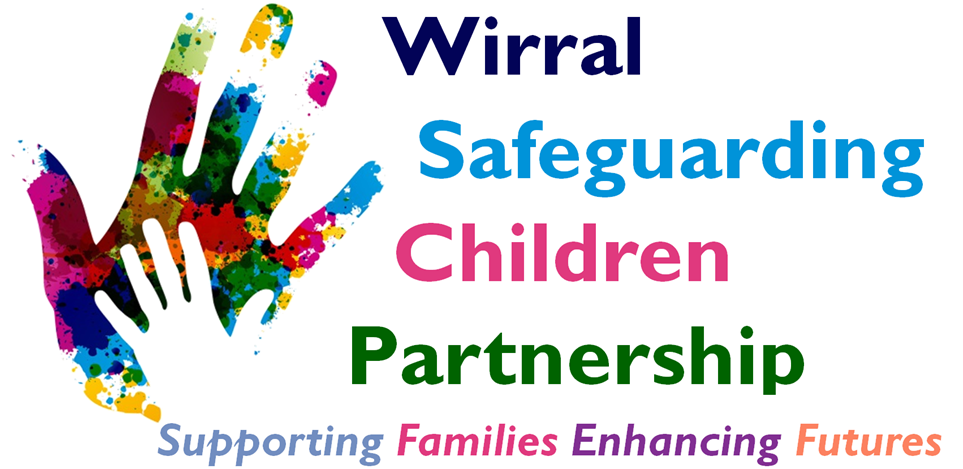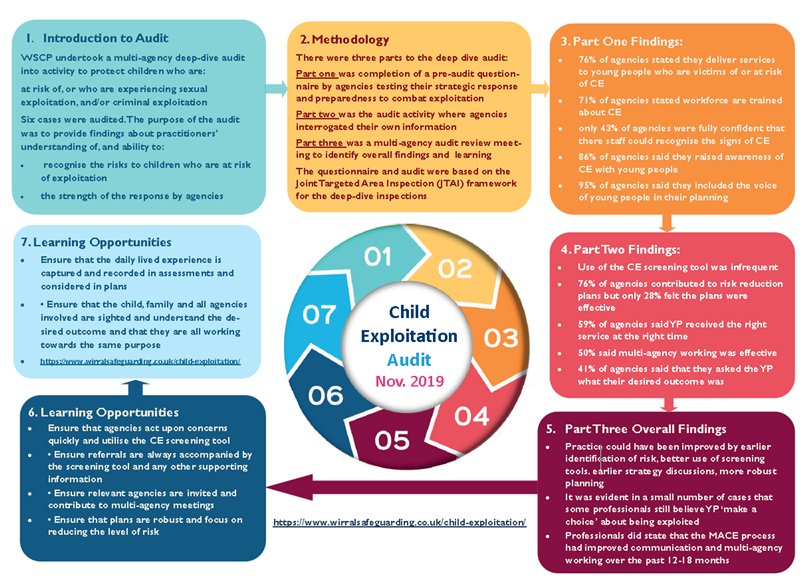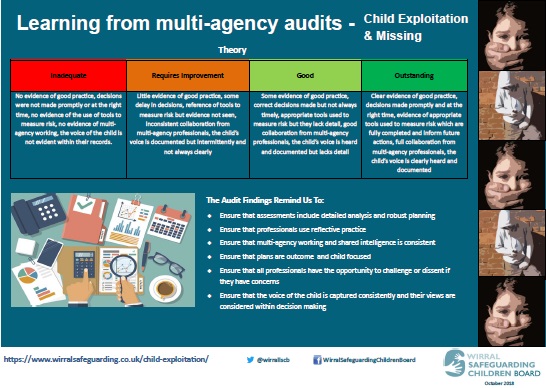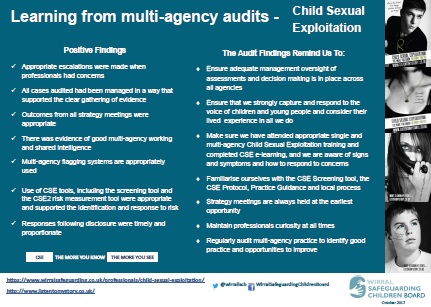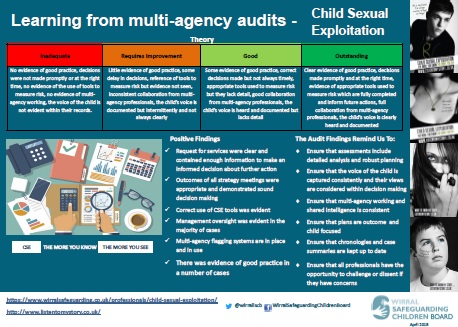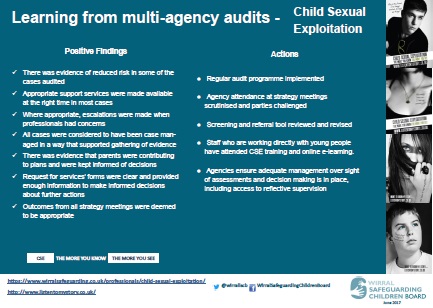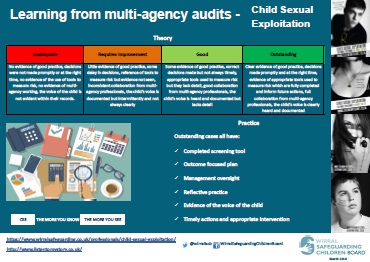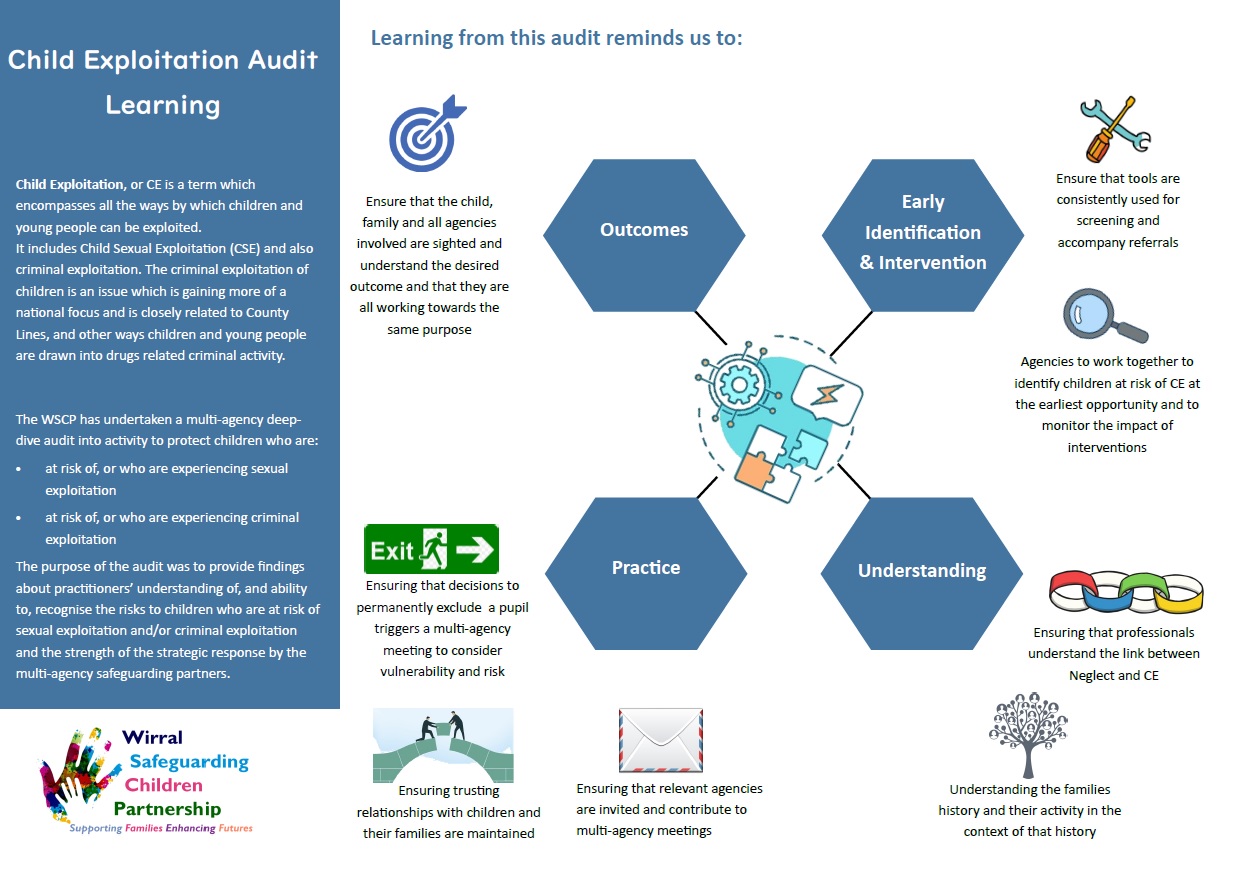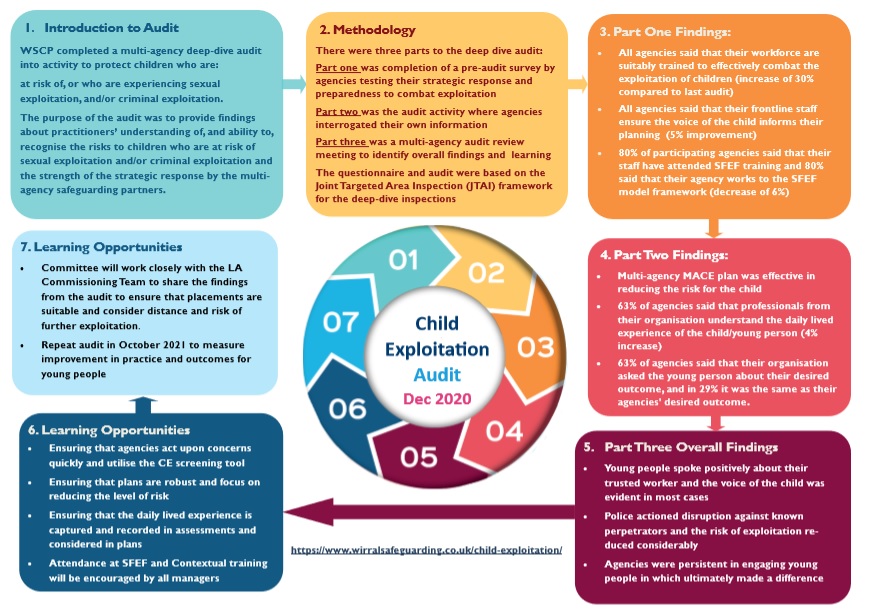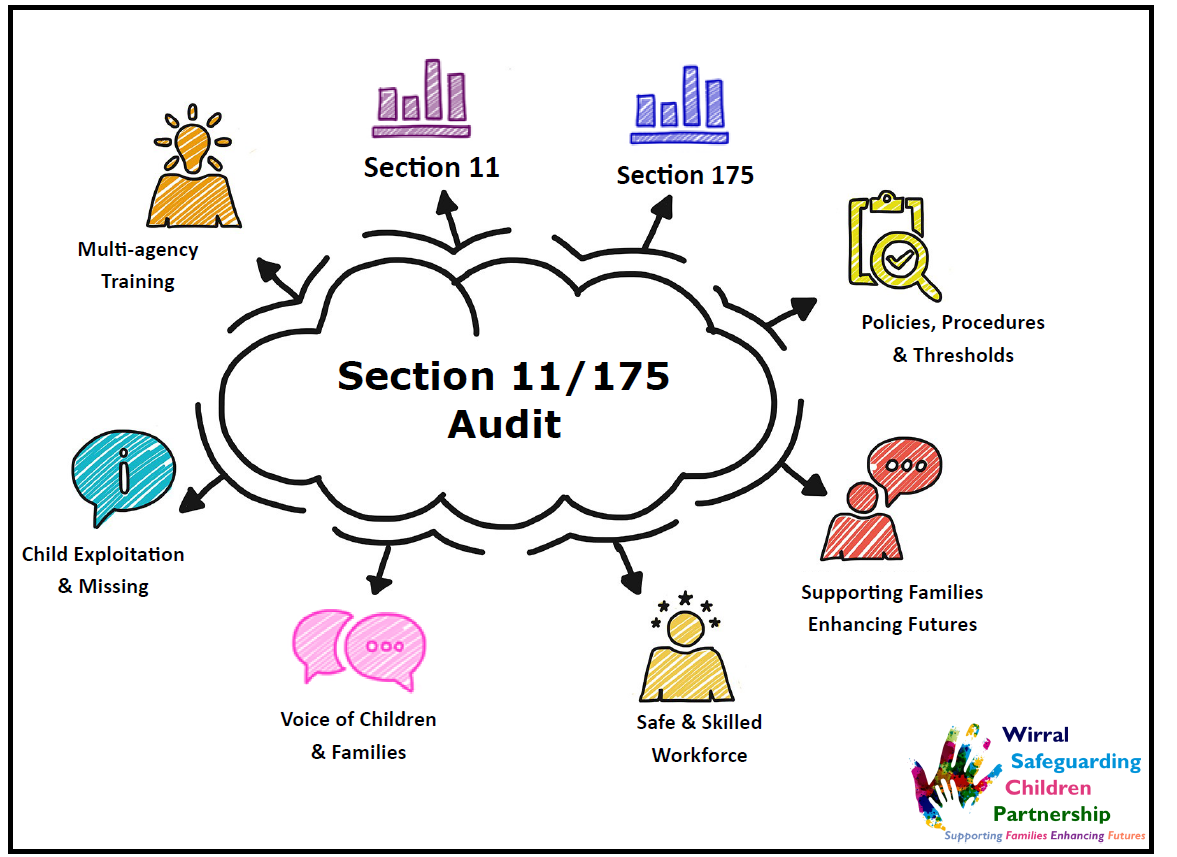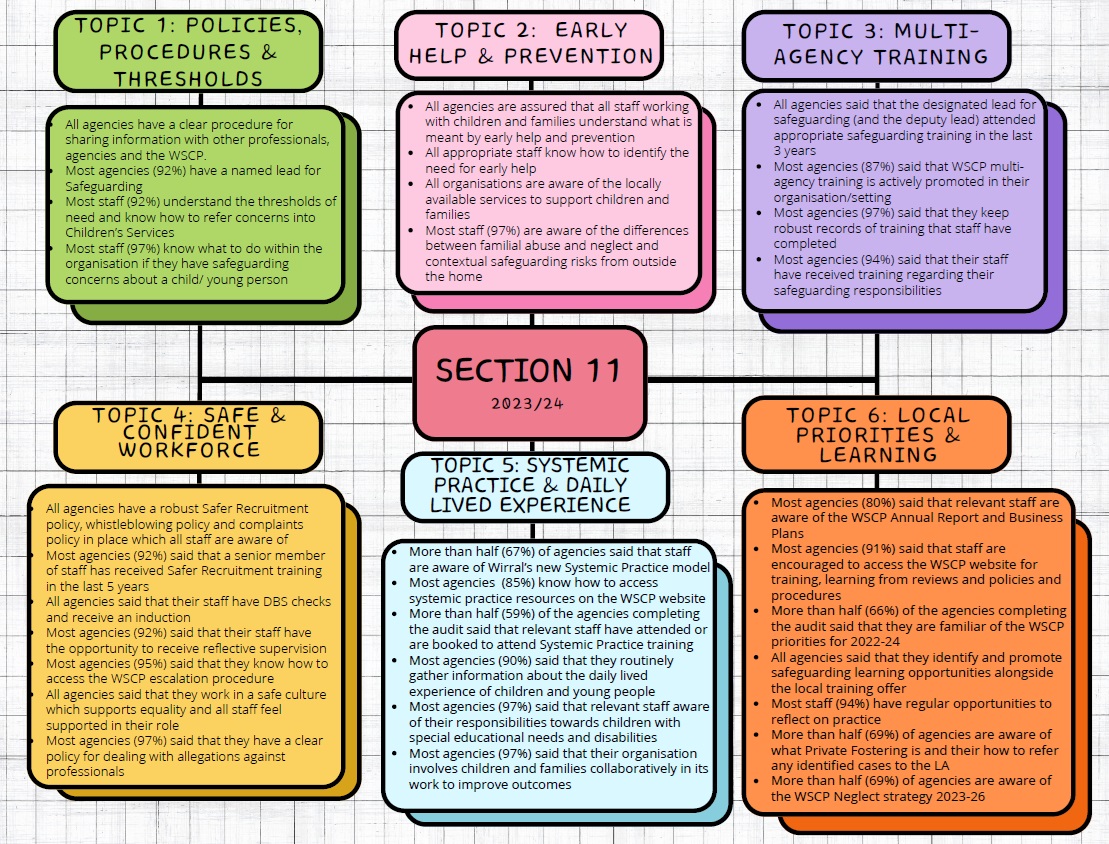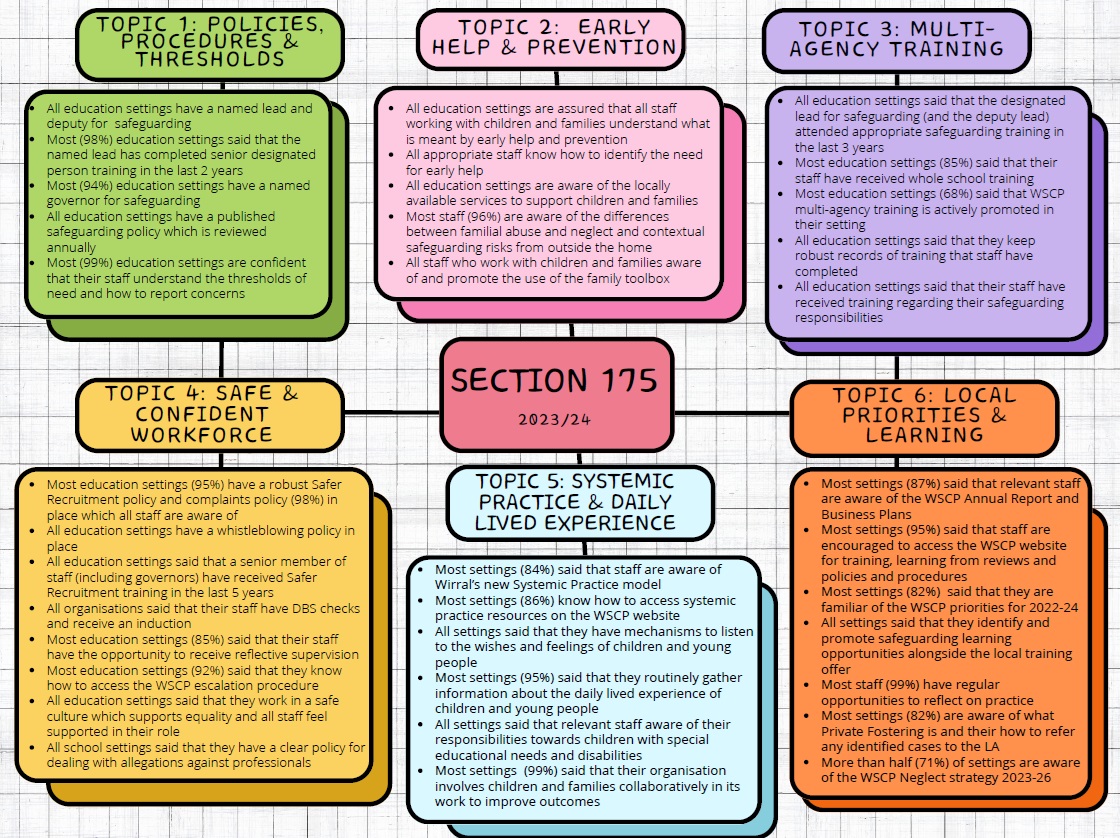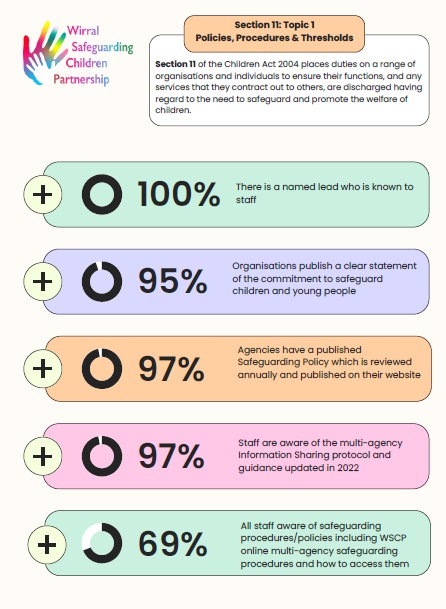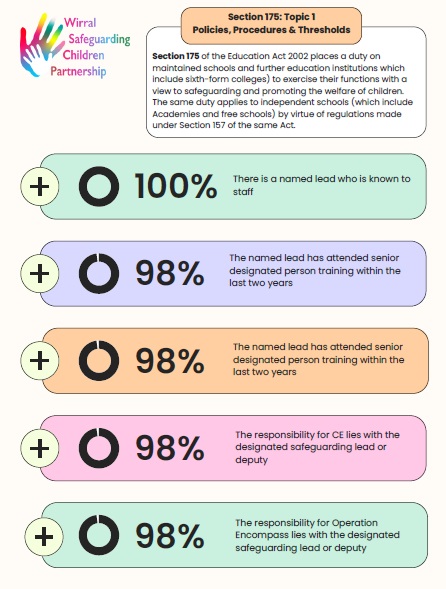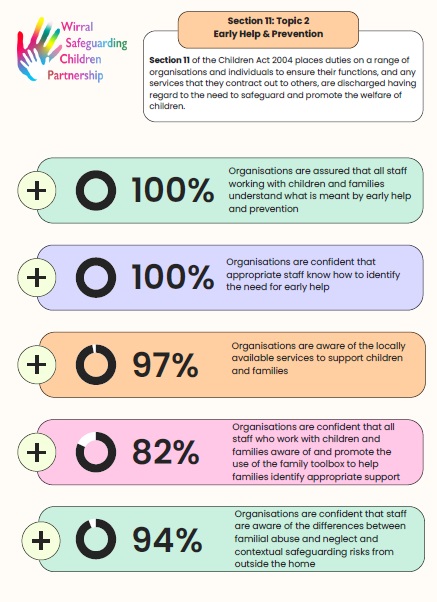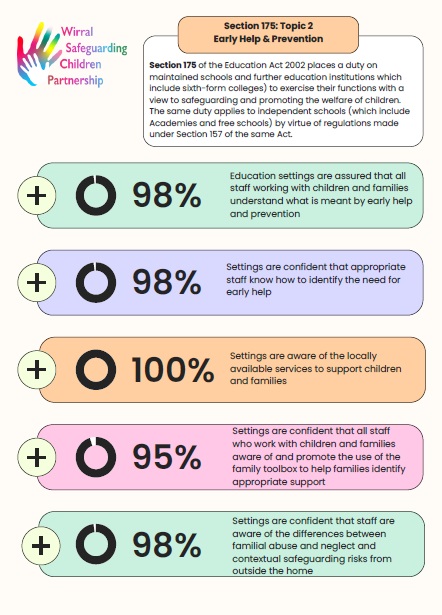Learning from audits
A key function of the WSCP is to monitor and evaluate the effectiveness of what is done by the Local Authority and partners individually and collectively to safeguard and promote the welfare of children and to advise them on ways to improve.
The purpose of auditing as part of a wider quality assurance process is to improve practice and the quality of the service we provide, with the intention of improving outcomes for children and young people through a process of continuous learning.
Multi-Agency Audit Cycle
Every year the WSCP undertakes a series of audits and reviews as part of its wider quality assurance function as described in the Operating Framework and the Learning and Improvement Framework. In terms of auditing the WSCP completes two significant annual activities:
- The Section 11/175 audits. These are self assessment audits completed to provide assurance to the WSCP that agencies are meeting their duties and responsibilities under Section 11 of the children act. The audits include action plans and are followed up with accountability meetings for statutory partners
- Multi-agency audits. The WSCP completes 3-6 multi-agency audits each year as part of the function of the Quality Assurance Committee and a number of additional multi-agency audits as directed by themes highlighted by the safeguarding partners and other safeguarding forums.
Quality Assurance Committee
In response to changes published in the Children and Social Work Act 2017, LSCB’s across the country have been replaced with new local safeguarding arrangements, led by the three named statutory safeguarding partners (Local Authority, Police, Health (CCG)).
The new safeguarding arrangements replaced the WSCB on the 1st September 2019.
One of the changes includes the introduction of a new Quality Assurance Committee which supersedes the previous Performance Audit and Data Committees.
The purpose of this group is to lead, direct and support co-ordinated multi-agency performance information, audit, scrutiny and review activity, which enables the safeguarding partners to assess the effectiveness of services for children in need of help and protection.
Audits and Learning
The Quality Assurance Committee undertakes and commissions multi-agency audit activity and publishes learning to the partnership.
Learning from each audit is presented in the posters embedded below.
(click to enlarge and download)
- Domestic Abuse
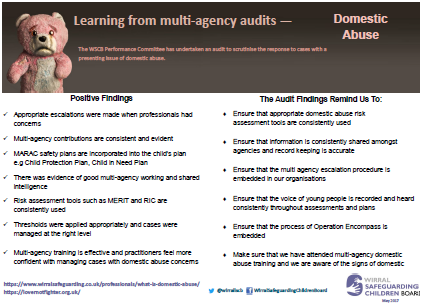
- Quality of Children Looked After (CLA) Plans
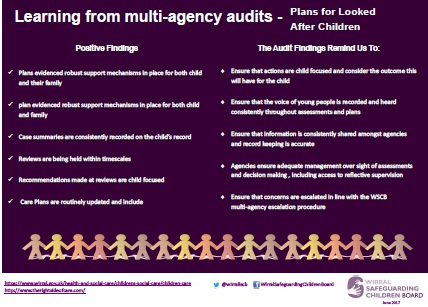
- Application of Thresholds
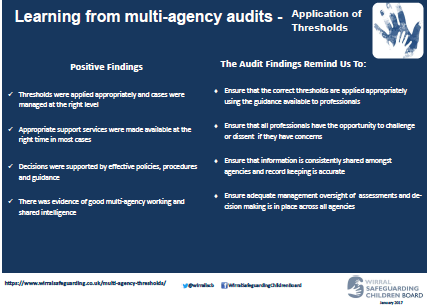
- Neglect & Use of the Graded Care Profile
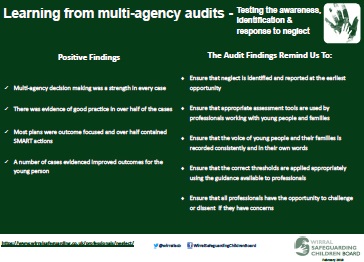
- Quality of Child Protection (CP) Plans
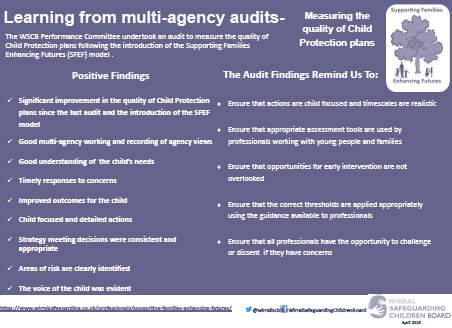
- Quality of Child in Need (CiN) Plans
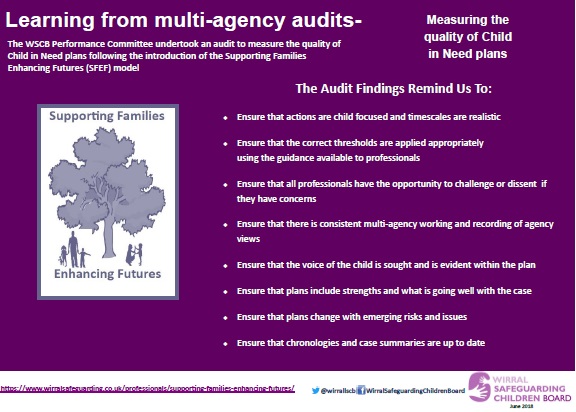
- Quality of Team Around the Family (TAF) Plans
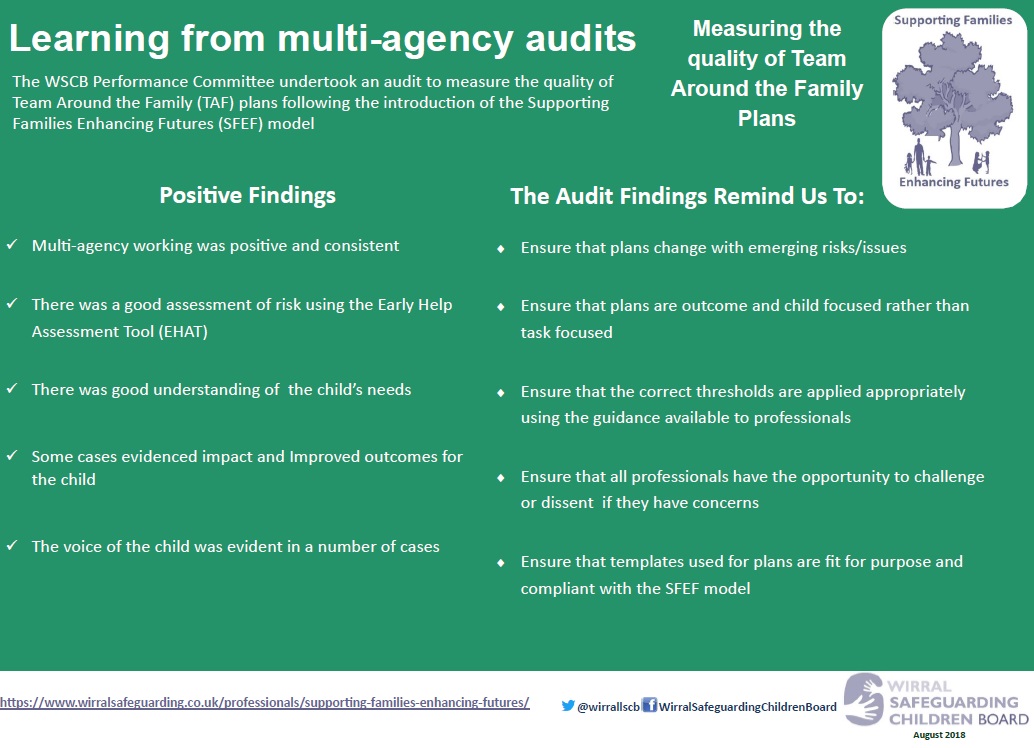
- The Use of Multi-Agency Escalation
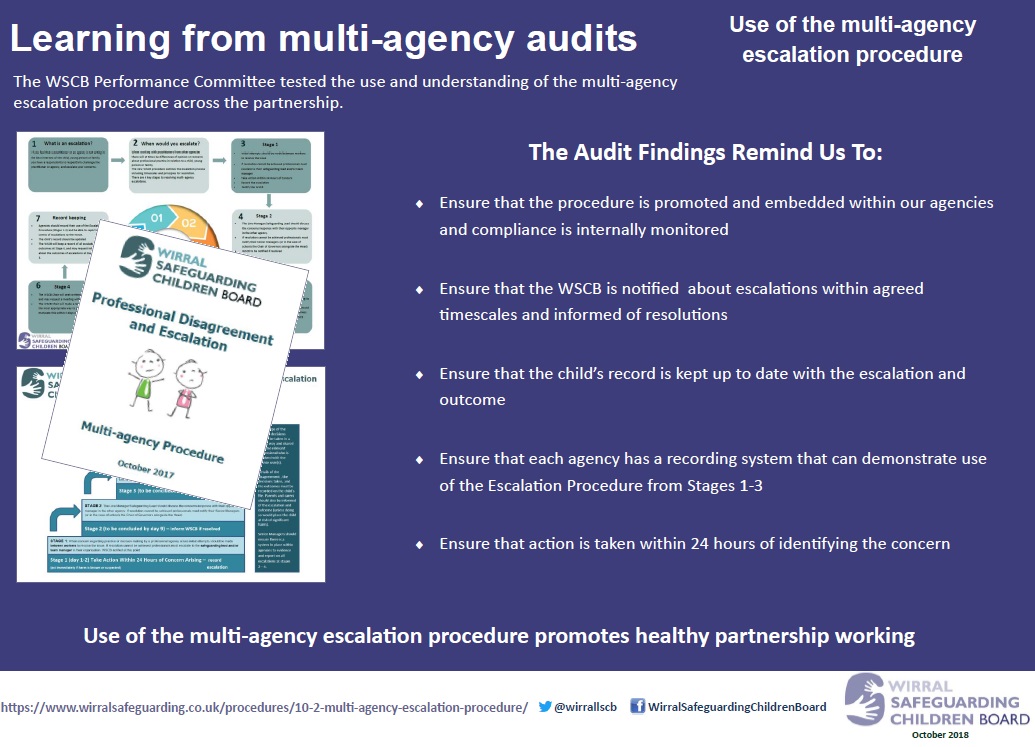
- The Quality & Use of Case Chronologies
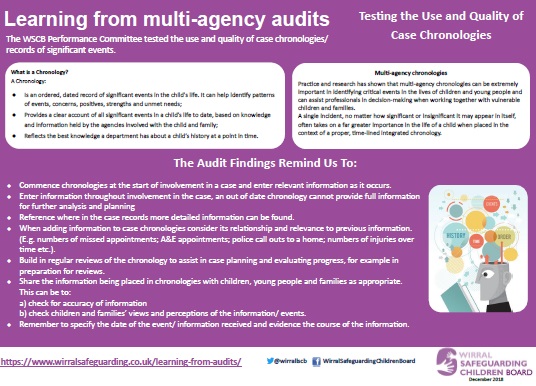
- Confidence and Understanding of Mental Capacity Assessments
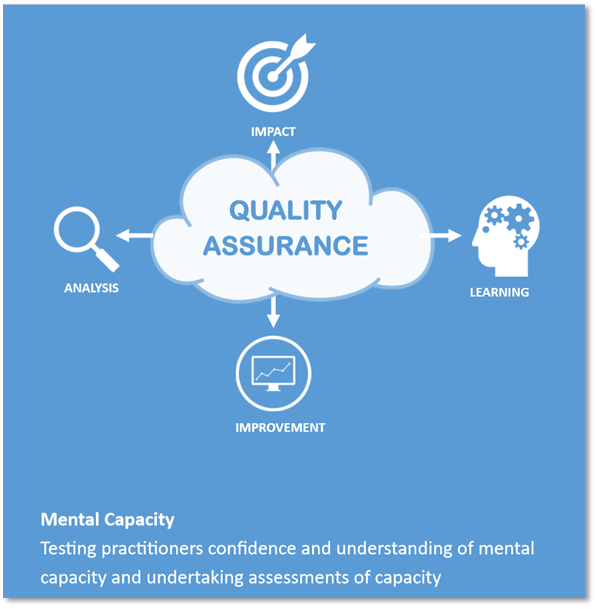
- Testing the impact of Adverse Childhood Experiences on young adults
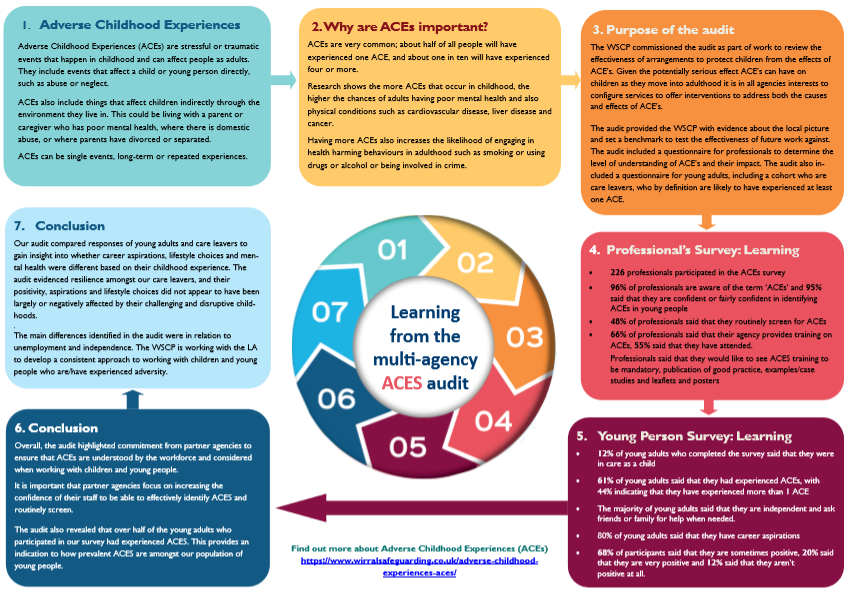
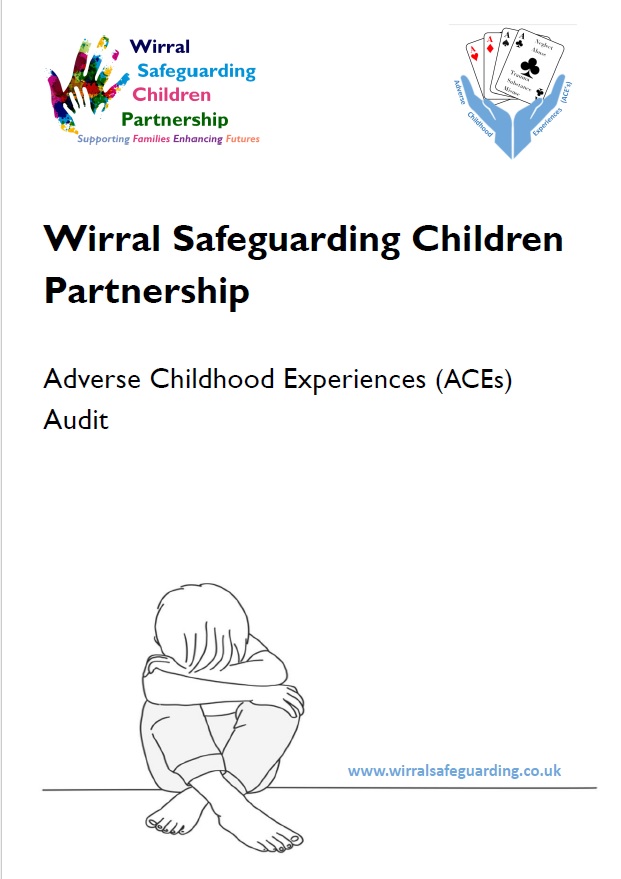
- Neglect and Graded Care Profile
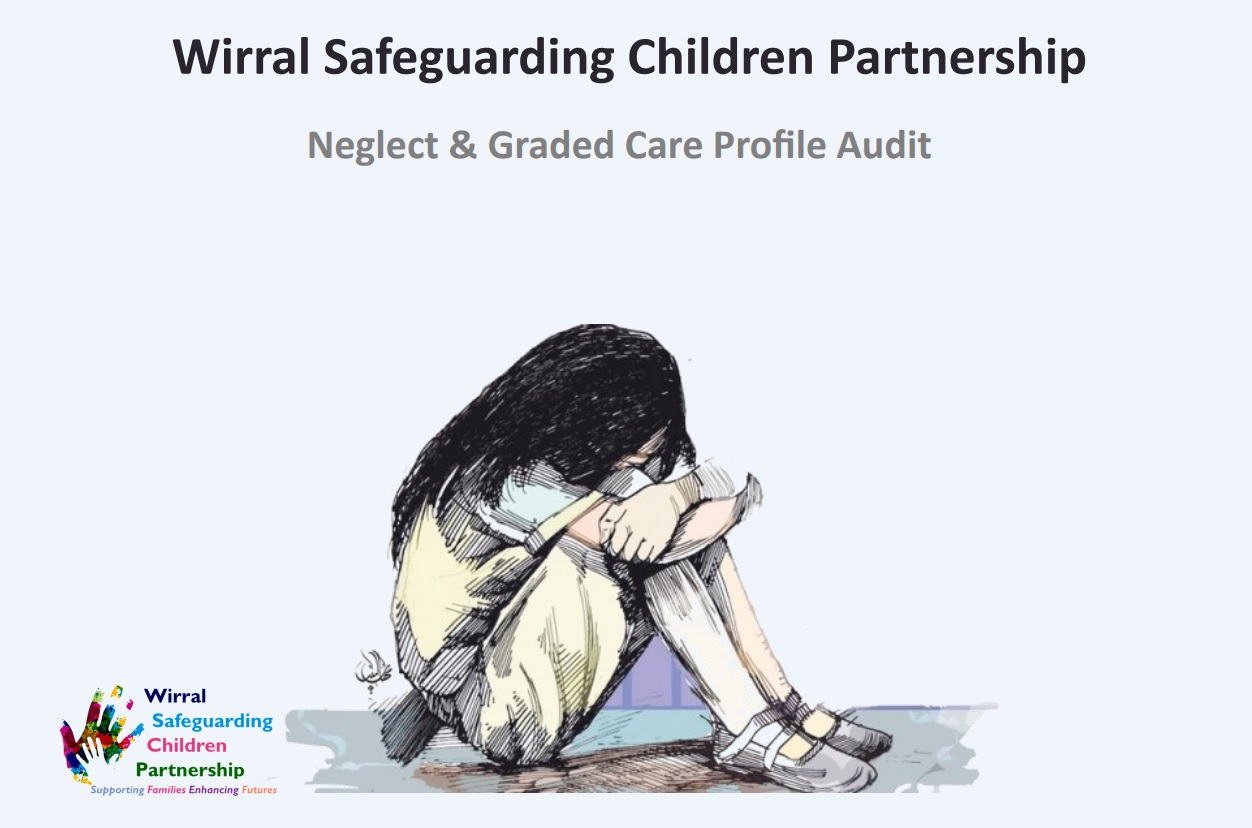
- Parental Substance Misuse
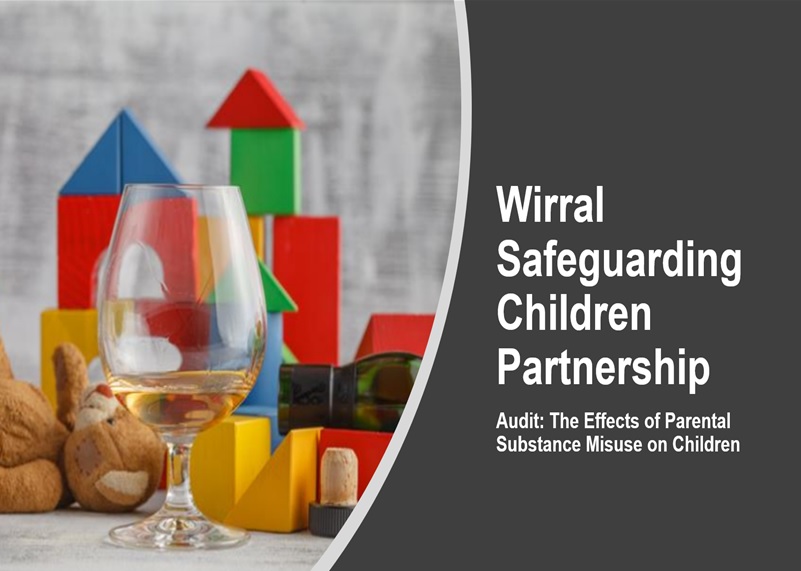
- ICON Programme – Babies Cry, You Can Cope
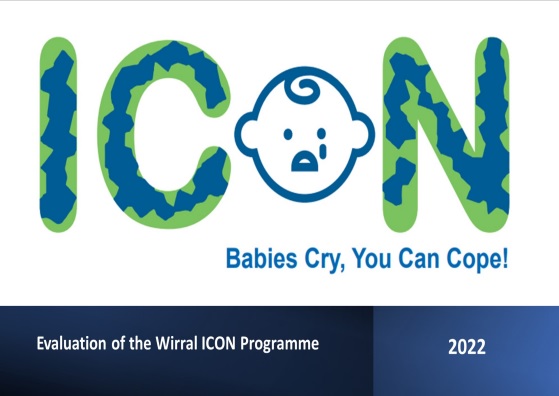
- Children Looked After aged 0-5

- Parental Substance Misuse Survey
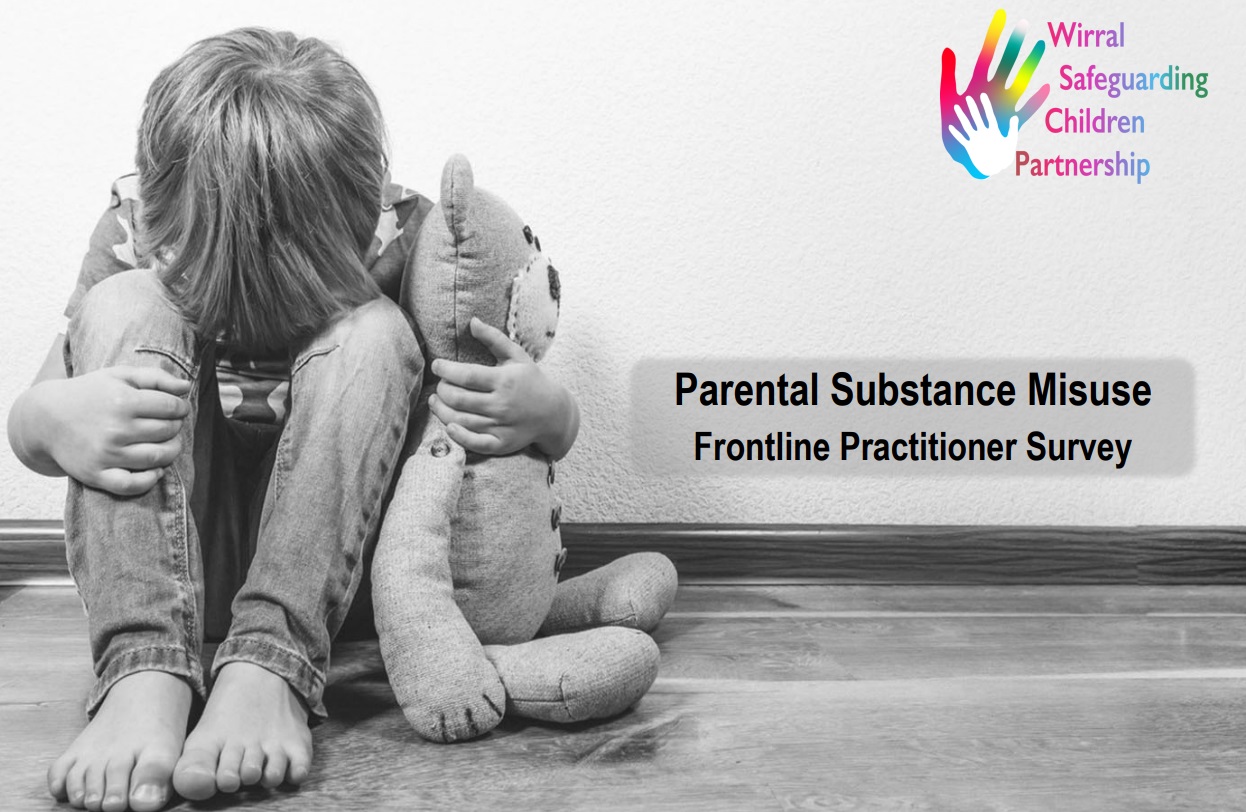
- Thresholds Survey
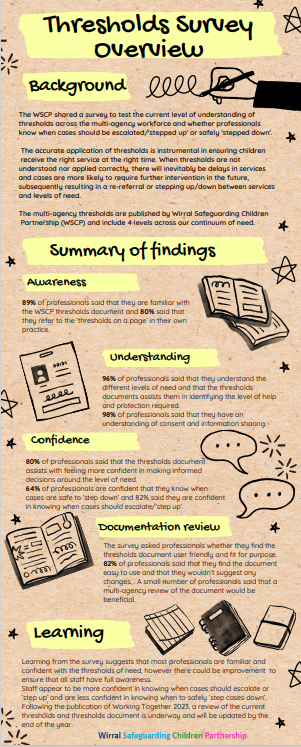
The WSCP Contextual Safeguarding Committee completed a series of multi-agency audits to scrutinise the response to contextual issues across the partnership.
Learning from audits is presented in the posters below.
Section 11 and Section 175 audits
The WSCP is the key statutory body for coordinating and ensuring the effectiveness of arrangements to safeguard and promote the welfare of all children in Wirral. It is the duty of the WSCP to hold agencies to account in terms of their safeguarding arrangements and practices.
The WSCP uses a variety of ways to test the strength of safeguarding arrangements across agencies in Wirral but one of the key ways is by the use of an annual safeguarding audit called the Section 11 Audit (for agencies) and a Section 175 Audit (for schools and colleges).
Reports
2020/21
2022/23
2023/24
2024/25 (so far)
Topic 1
Topic 2
To find out more about Section 11, including user guides and audit links, click here.
